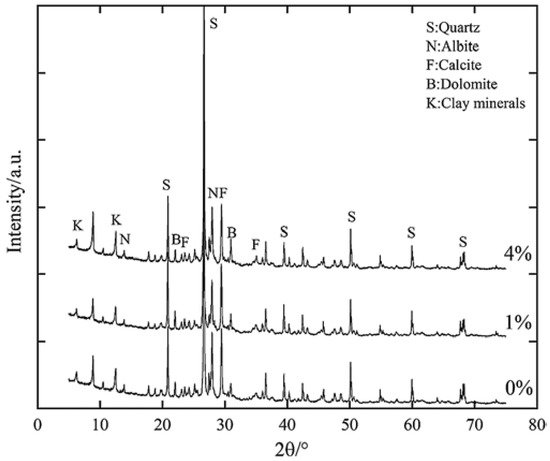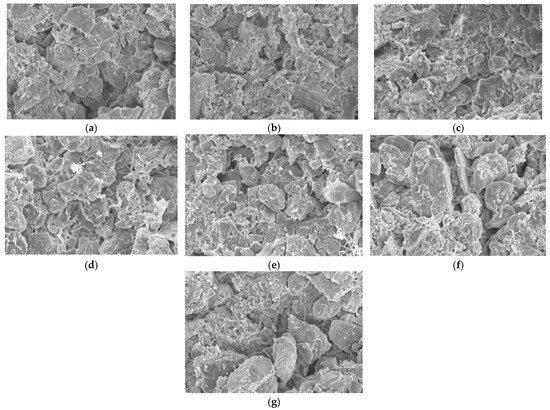You're using an outdated browser. Please upgrade to a modern browser for the best experience.
Please note this is an old version of this entry, which may differ significantly from the current revision.
Subjects:
Engineering, Civil
As an organic material with large reserves and environmental protection, the application of lignin in loess improvement can greatly improve the engineering properties of loess, such as water loss disintegration and water collapsibility. The microscopic results show that the incorporation of lignosulfonate produces a three-dimensional network structure, which can effectively cement loess particles and improve soil strength and impermeability, and the Quantity of this network structure depends on the amount of lignosulfonate.
- lignin
- lignosulfonate
- loess
- curing agent
- mechanical properties
- microstructure
1. Properties and Applications of Lignosulfonates
Lignosulfonate has strong dispersibility, cohesion, and chelation. The abundant phenolic hydroxyl groups endow lignin with excellent antioxidant, antibacterial and UV protection properties [26], these active sites are beneficial for the preparation of composite materials [27,28,29]; Polar functional groups such as hydroxyl and carboxyl can weaken the surface force when compounding with other materials [22,30,31,32]; sulfonic acid groups have good water solubility. The natural degradation process of lignin is very slow. At present, only white-rot fungi have been found to completely degrade lignin; therefore, the durability of lignosulfonate can be guaranteed after being incorporated into loess [33,34].
Because of their surface activity, lignosulfonates are often used in other fields, such as dyes, the coal industry, and the construction industry, such as in clay pavement reinforcement [35] and as a concrete water reducing agent [36,37], adsorbent [38], dispersant [39,40,41], catalyst [42], etc. In recent years, research on improving loess with lignosulfonates has gradually increased. In 2017, He et al. [43] found that when the amount of lignosulfonates was too large, agglomeration occurs, which affects the soil improvement effect. This phenomenon is directly related to the molecular weight of lignosulfonate [44], and the relative molecular weight of lignosulfonate is larger than other types of lignin [45]; therefore, there is the problem of optimal dosage of lignosulfonate to improve loess in theory.
2. Analysis of the Lignosulfonate Reinforcement Mechanism
2.1. Mineral Composition Analysis
X-ray diffraction tests show that the diffraction peaks of lignosulfonate-modified loess and plain soil are basically the same and their mineral compositions are basically the same [46,47,48], as shown in Figure 3.

Figure 3. The XRD results of lignosulfonate-modified loess [47].
Liu [46] tested and analyzed the mineral composition of loess modified by calcium lignosulfonate with different dosages and concluded that calcium lignosulfonate and albite (NaAlSi3O8) in loess undergo decomposition and replacement reactions at the initial stage to form quartz (SiO2), thereby improving the mechanical properties of the improved soil. Ca2+ in calcium lignosulfonate reacts with loess to form calcite (CaCO3) and dolomite (CaMg(CO3)2). Carbonate is an inorganic compound with good filling and cementing ability, and its content is the largest when the content of calcium lignosulfonate is 1% to 1.5%. The content of clay minerals increases first and then decreases with the addition of calcium lignosulfonate, and the content is the largest when the dosage of calcium lignosulfonate is 1%. Clay minerals can not only improve the bonding strength between particles but also enhance the water-holding capacity of modified loess due to their hydrophilicity [46].
Hou et al. [49] compared the mineral composition of loess modified with 3% calcium lignosulfonate or 3% sodium lignosulfonate. It was concluded that Na+ in sodium lignosulfonate produces the clay mineral albite (NaAlSi3O8) in this reaction. The increase in quartz content can improve certain mechanical properties of the modified soil, but the carbonate in the modified soil does not increase significantly compared with calcium lignosulfonate, the cementation effect on loess is weaker, and sodium lignosulfonate leads to excessive Na+ in the soil.
2.2. Microstructure Analysis
Through SEM experiments, Liu [46] found that the pore types of remodeled loess are mainly large and medium pores, the porosity is high, and the connection between particles is mainly overlapping, where some small particles are attached to the large particles. When the content of lignosulfonate increases from 0 to 1%, the fine particles have the effect of filling the pores in the soil, the large pores are significantly reduced, the medium and small pores become the main pore form, and the total pore area is significantly reduced [50]. Calcium lignosulfonate can reduce the thickness of the bound water film adsorbed on the surface of clay particles, reduce the distance between particles, make the arrangement more compact [43], and form obvious cementing substances with loess particles, which strengthens the soil skeleton structure. The structure type gradually changes from a mosaic structure to a clot-like cemented structure, and the loess particles transition from point contact to surface contact [46,51,52]. When the amount of lignosulfonate increases to 2%, small and medium pores are still the main pore types, the aggregated flocculent cement does not increase significantly, the total pore area does not decrease significantly, and the lignosulfonate particles between particles increase. When the content of lignosulfonate exceeds 2%, some lignin preferentially combines with itself to form aggregates due to cohesiveness and chelation [51], the spacing between soil particles increases, the cementation strength between particles is weakened, and the pore structure type is transformed into a mosaic structure again. Therefore, the continuous increase in the content of lignosulfonate cannot play a role in strengthening loess all the time (see Figure 4).

Figure 4. SEM images of lignosulfonate-modified loess with the stated percentages of lignosulfonate magnified at 500 times [46]. (a) 0%; (b) 0.5%; (c) 1%; (d) 1.5%; (e) 2%; (f) 3%; (g) 4%.
Through experiments, Liu et al. [24,46] and Huang [52] found that when the content of lignosulfonate is 1–2%, the microstructure parameters of the loess modified by lignosulfonate are the smallest, such as porosity and average pore area. It exhibits the optimal structure, which orders the directional arrangement of the improved loess. Liu [46] also observed that a “network structure” was formed in the pores of loess after adding lignosulfonate to loess (see Figure 5). It can not only fill pores and effectively cement soil particles but also acts as a scaffold for the entire soil structure and improve the strength of the skeleton, where the network structure is the most abundant when the content of lignosulfonate is 1–1.5%.

Figure 5. Lignosulfonate-modified loess reticular structures at the stated magnifications [46]. (a) 500×; (b) 800×.
This entry is adapted from the peer-reviewed paper 10.3390/app12199843
This entry is offline, you can click here to edit this entry!
